Recent Posts
What Can I Expect During Storm Damage Restoration?
8/26/2024 (Permalink)
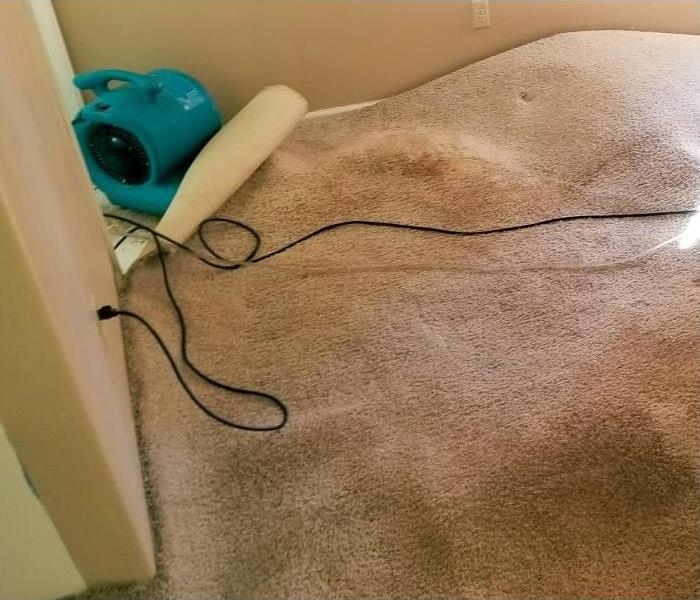 Storm Damage Restoration in North Central Colorado Spring
Storm Damage Restoration in North Central Colorado Spring
Storm damage can be overwhelming, leaving your home or business in disarray and causing significant stress. Understanding what to expect during the storm damage restoration process can help alleviate some of that anxiety and ensure you are well-prepared for the steps ahead. This blog will walk you through the typical stages of storm damage restoration, from the initial assessment to the final cleanup, so you can navigate this challenging time with confidence.
1. Initial Assessment and Inspection
The first step in the storm damage restoration process is a thorough assessment and inspection of the affected property. A professional restoration team will arrive at your property to evaluate the extent of the damage caused by the storm. This assessment is crucial as it helps to determine the scope of work required and the resources needed for the restoration process.
During the inspection, the team will look for:
Structural Damage: This includes checking for any damage to the roof, walls, windows, and foundation of the building. Storms can cause significant structural issues that need to be addressed immediately to ensure the safety of the property.
Water Damage: Flooding and heavy rains can lead to water infiltration, which can cause serious problems like mold growth, wood rot, and damage to electrical systems. The restoration team will assess the extent of water damage and identify areas that require drying and dehumidification.
Debris and Hazardous Materials: Storms often leave behind debris such as fallen trees, broken glass, and other hazardous materials. The team will identify and document these hazards to ensure they are safely removed during the cleanup process.
Once the assessment is complete, the restoration company will provide you with a detailed plan outlining the necessary steps, estimated timeline, and costs involved in the restoration process.
2. Emergency Tarping and Board-Up Services
If your property has sustained significant damage, such as a compromised roof or broken windows, emergency tarping and board-up services may be required to prevent further damage. The restoration team will quickly secure your property by covering exposed areas with tarps and boarding up broken windows or doors. This step is essential to protect your property from additional damage caused by rain, wind, or unauthorized entry.
Emergency services also help to stabilize the situation and create a safer environment for the restoration crew to work in. It is important to address these immediate concerns before moving on to the more extensive restoration work.
3. Water Extraction and Drying
Water damage is one of the most common and destructive consequences of storms. After securing your property, the restoration team will begin the water extraction process. This involves removing standing water using specialized pumps and vacuums to prevent further damage to your property.
Once the standing water has been removed, the drying process begins. The team will use industrial-grade dehumidifiers and air movers to thoroughly dry out the affected areas. Proper drying is crucial to prevent mold growth and to ensure that any hidden moisture pockets are eliminated.
In some cases, the restoration team may need to remove damaged materials such as carpeting, drywall, and insulation if they are beyond repair. These materials will be carefully disposed of to avoid cross-contamination.
4. Mold Remediation
Mold can begin to grow within 24 to 48 hours after water damage occurs, making mold remediation a critical step in the restoration process. If mold is detected during the initial inspection or during the drying process, the restoration team will take immediate action to contain and remove it.
Mold remediation involves:
Containment: The affected area will be sealed off to prevent the spread of mold spores to other parts of the property.
Removal: Mold-infested materials will be carefully removed and disposed of. The team will also clean and disinfect the area to eliminate any remaining mold spores.
Air Filtration: High-efficiency particulate air (HEPA) filters will be used to remove airborne mold spores from the environment, improving air quality and reducing the risk of further contamination.
The goal of mold remediation is to restore a safe and healthy environment for you and your family or employees.
5. Structural Repairs and Restoration
With the property dried out and mold concerns addressed, the next phase is structural repairs and restoration. This stage involves repairing or replacing damaged components of your property, including the roof, walls, floors, and windows.
The scope of structural repairs will depend on the extent of the damage. In some cases, minor repairs such as patching holes in the roof or replacing broken windows may be sufficient. However, more severe damage may require extensive reconstruction, including rebuilding entire sections of the property.
During this phase, the restoration team will also address any cosmetic issues, such as repainting walls, installing new flooring, and restoring cabinetry or fixtures that were damaged in the storm.
6. Contents Restoration
In addition to the structural restoration of your property, the restoration team will also focus on restoring your personal belongings. Contents restoration involves cleaning, repairing, and restoring items that were damaged during the storm, such as furniture, electronics, clothing, and documents.
The restoration team will use specialized techniques and equipment to clean and deodorize items, as well as restore them to their pre-damage condition. In some cases, items that are too severely damaged may need to be replaced, but the team will work diligently to salvage as much as possible.
7. Final Cleanup and Sanitization
Once all repairs and restoration work have been completed, the final step is a thorough cleanup and sanitization of the entire property. The restoration team will remove any remaining debris, dust, and contaminants, ensuring that your property is clean and safe for occupancy.
This step includes:
Deep Cleaning: All surfaces will be cleaned and disinfected, including floors, walls, and fixtures.
Odor Removal: Any lingering odors caused by water damage or mold will be addressed using advanced deodorization techniques.
Air Quality Testing: The team may conduct air quality tests to ensure that the indoor environment is free from harmful pollutants and allergens.
The goal of the final cleanup and sanitization process is to leave your property in a pristine condition, making it feel as though the storm damage never occurred.
8. Post-Restoration Inspection and Follow-Up
After the restoration work is complete, the team will conduct a final inspection to ensure that all aspects of the project have been properly addressed. They will walk you through the restored areas, explaining the work that was done and answering any questions you may have.
Additionally, reputable restoration companies often provide follow-up services to check on the property after a certain period, ensuring that no issues have arisen since the restoration was completed. This commitment to customer satisfaction gives you peace of mind that your property has been fully restored and is ready for normal use.
Storm damage restoration is a complex and multi-step process that requires the expertise of trained professionals. By understanding what to expect during each phase of the restoration process, you can better prepare for the journey ahead and work closely with the restoration team to achieve the best possible outcome. Whether it's securing your property, drying out water damage, or restoring your belongings, the goal of storm damage restoration is to return your home or business to its pre-storm condition, allowing you to move forward with confidence.
Restoring Your Home After Fire Damage: How SERVPRO Makes It Look "Like it Never Even Happened
7/22/2024 (Permalink)
 Reduce your Risk in North Central Colorado Spring, CO
Reduce your Risk in North Central Colorado Spring, CO
Fire damage can be one of the most devastating events a property owner can experience. Beyond the immediate destruction caused by the flames, there are often extensive issues related to smoke damage, water damage from firefighting efforts, and structural compromises. At SERVPRO®, we understand the emotional and physical toll this can take on homeowners. Our comprehensive fire damage restoration process is designed to not only restore your property but to also give you peace of mind, making it seem "like it never even happened.
Initial Contact and Assessment
The restoration process begins the moment you contact us. Our 24/7 emergency response ensures that we can start the assessment and mitigation process as quickly as possible, minimizing further damage. When our team arrives on-site, we conduct a thorough inspection to assess the extent of the fire, smoke, and soot damage. This assessment includes checking for structural integrity, identifying affected areas, and determining the best course of action for restoration.
Securing the Property
Before any restoration work begins, it's crucial to secure the property to prevent further damage and ensure safety. This step often involves boarding up windows and doors and placing tarps on damaged roofs. By securing the property, we protect it from weather elements, vandalism, and additional structural collapse, allowing our team to work safely and efficiently.
Water Removal and Drying
Firefighting efforts often leave behind significant water damage. The next step in the restoration process involves the removal of standing water and thorough drying of affected areas. Our technicians use powerful pumps and industrial-strength dehumidifiers to extract water and dry out the structure. This step is vital to prevent mold growth and further deterioration of materials.
Soot and Smoke Removal
One of the most challenging aspects of fire damage restoration is dealing with soot and smoke residues. These residues can penetrate surfaces and leave behind persistent odors and discoloration. Our team employs specialized equipment and techniques to remove soot from walls, ceilings, and other surfaces. We use air scrubbers, thermal foggers, and ozone generators to eliminate smoke odors, ensuring that your home smells fresh and clean.
Cleaning and Sanitizing
Once the soot and smoke residues are removed, we focus on cleaning and sanitizing the affected areas. This step involves using advanced cleaning products and techniques to clean and sanitize all restorable items and structures. We pay special attention to personal belongings, furniture, and other valuable items, ensuring they are thoroughly cleaned and deodorized. Our goal is to restore your possessions to their pre-fire condition whenever possible.
Restoration and Repairs
The final step in the fire damage restoration process is the actual restoration and repairs. This phase can range from minor repairs, such as replacing drywall and painting, to major reconstruction efforts. SERVPRO has a team of skilled contractors who can handle all aspects of the restoration, ensuring a seamless and efficient process. Our comprehensive approach means you won't need to hire multiple contractors, saving you time and reducing stress.
Specialized Services
In addition to the standard fire damage restoration steps, SERVPRO offers specialized services to address unique challenges. These services include:
Document and Media Recovery: We use state-of-the-art techniques to restore important documents, photographs, and media that may have been damaged in the fire.
Electronics Restoration: Our technicians can evaluate and restore electronic devices affected by fire and smoke damage, helping you salvage valuable equipment.
Art and Antiques Restoration: We work with specialized conservators to restore valuable artworks and antiques to their original condition.
Customer Communication and Support
Throughout the entire restoration process, we prioritize clear and consistent communication with our customers. We understand that fire damage can be overwhelming, and we aim to provide reassurance and support every step of the way. Our team keeps you informed about the progress of the restoration, addresses any concerns, and works closely with your insurance company to facilitate a smooth claims process.
The SERVPRO Difference
What sets SERVPRO apart is our commitment to excellence and customer satisfaction. Our highly trained technicians are certified by the Institute of Inspection Cleaning and Restoration Certification (IICRC) and receive ongoing training to stay up-to-date with the latest industry standards and techniques. We use advanced equipment and technology to ensure the highest quality of service.
Our "Like it never even happened" promise reflects our dedication to restoring your home to its pre-fire condition. We understand the importance of getting your life back to normal as quickly as possible, and we strive to exceed your expectations in every aspect of the restoration process.
Preventive Measures and Education
At SERVPRO, we believe that prevention is key to reducing the risk of fire damage. We offer educational resources and services to help homeowners implement fire safety measures and reduce the likelihood of future incidents. From installing smoke detectors to creating fire escape plans, we provide valuable information to keep your family and property safe.
Experiencing a fire in your home is undoubtedly a traumatic event, but with SERVPRO by your side, you can rest assured that your property is in capable hands. Our comprehensive fire damage restoration process is designed to address every aspect of the damage, from initial assessment to final repairs. With our expertise, advanced technology, and commitment to customer satisfaction, we make it our mission to restore your home to its former glory, making it truly "Like it never even happened." If you ever find yourself in need of fire damage restoration services, don't hesitate to contact us. We're here to help you every step of the way.
Understanding Storm Damage in Colorado Springs, CO
7/4/2024 (Permalink)
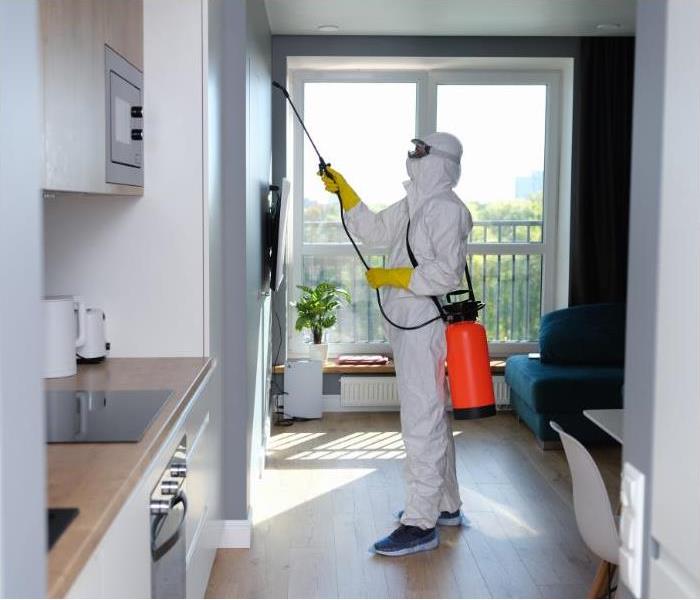 Storm Damage in Colorado Springs, CO
Storm Damage in Colorado Springs, CO
Colorado Springs, situated at the foot of the Rocky Mountains, is known for its stunning landscapes and dynamic weather patterns. While the city's location provides breathtaking views and a plethora of outdoor activities, it also subjects the area to frequent and sometimes severe storms. These storms can range from intense thunderstorms and hail to heavy snowfall and even the occasional tornado. As a result, homes and businesses in Colorado Springs often face significant storm damage, necessitating prompt and professional mitigation services.
The Nature of Storm Damage in Colorado Springs
Storm damage in Colorado Springs can manifest in various forms, each posing unique challenges and risks:
Wind Damage: High winds can cause extensive damage by ripping off roofing materials, breaking windows, and toppling trees. This can lead to structural damage and create openings that allow rain to penetrate, causing further harm.
Hail Damage: Hail is a common occurrence in Colorado Springs, especially during the spring and summer months. Hailstones can range in size from small pellets to large golf balls, and they can cause significant damage to roofs, siding, windows, and vehicles.
Flooding: Heavy rain and rapid snowmelt can result in flooding, which can devastate homes and businesses. Floodwaters can saturate building materials, ruin personal belongings, and create an environment conducive to mold growth.
Snow and Ice: Winter storms bring their own set of challenges, with heavy snow and ice accumulation posing risks to roofs and structures. Ice dams can form on roofs, causing water to back up and seep into the building, leading to interior water damage.
Lightning: Although less common, lightning strikes during storms can cause fires and electrical damage, posing serious risks to property and safety.
Given these diverse threats, it’s crucial for residents and business owners in Colorado Springs to have a reliable partner in storm damage restoration. This is where SERVPRO comes into play.
How SERVPRO Can Help Mitigate Storm Damage
SERVPRO, a leader in the restoration industry, specializes in storm damage mitigation and restoration. With years of experience and a team of highly trained professionals, SERVPRO is equipped to handle the aftermath of any storm. Here's how SERVPRO can assist Colorado Springs residents and businesses in the wake of storm damage:
Rapid Response and Assessment
When a storm hits, time is of the essence. SERVPRO understands the importance of a quick response to minimize damage and prevent further issues. Their team is available 24/7, ready to mobilize and arrive on-site promptly. The first step in their process is a thorough assessment of the damage. Using advanced technology and their expertise, they identify the extent of the damage and develop a comprehensive restoration plan.
Water Extraction and Drying
Water damage is a common consequence of storms, whether from rain, flooding, or snowmelt. SERVPRO employs powerful pumps and industrial-grade vacuums to extract water from affected areas swiftly. Once the water is removed, they use high-tech drying equipment and techniques to ensure all moisture is eliminated. This step is crucial in preventing mold growth, which can begin within 24-48 hours of water exposure.
Structural Repairs and Restoration
Storms can cause structural damage that compromises the safety and integrity of buildings. SERVPRO's team includes skilled construction professionals who can repair and rebuild damaged structures. From replacing roofing materials and siding to repairing windows and doors, they ensure that the property is restored to its pre-storm condition.
Mold Remediation
Mold can develop quickly in the aftermath of a storm, particularly if water damage is not addressed promptly and thoroughly. SERVPRO's mold remediation experts follow a stringent process to remove mold safely and effectively. They identify and contain the mold growth, use specialized cleaning agents to eliminate it, and implement preventive measures to reduce the risk of future mold issues.
Content Restoration
Storm damage often affects personal belongings and important documents. SERVPRO offers content restoration services to clean, sanitize, and restore items that can be saved. Using specialized techniques, they can recover and preserve items such as photographs, artwork, electronics, and furniture.
Insurance Coordination
Navigating the insurance process after storm damage can be overwhelming. SERVPRO works closely with insurance companies to streamline the claims process for their clients. They provide detailed documentation of the damage, a comprehensive restoration plan, and regular updates to both the property owner and the insurance company. This collaboration helps ensure a smoother and more efficient claims process.
Preventive Measures and Advice
In addition to restoration services, SERVPRO offers valuable advice and preventive measures to help property owners protect their homes and businesses from future storm damage. This can include recommendations for improved drainage systems, better roofing materials, and proper landscaping to minimize the risk of flooding and wind damage.
Why Choose SERVPRO?
SERVPRO stands out for its commitment to quality, customer satisfaction, and professionalism. Here are a few reasons why Colorado Springs residents and business owners should consider SERVPRO for storm damage restoration:
Expertise and Experience: With decades of experience in the restoration industry, SERVPRO has the knowledge and skills to handle any storm damage scenario.
Advanced Technology: SERVPRO uses state-of-the-art equipment and techniques to ensure efficient and effective restoration.
24/7 Availability: Storms don’t adhere to a schedule, and neither does SERVPRO. Their team is available around the clock to respond to emergencies.
Comprehensive Services: From initial damage assessment to final repairs, SERVPRO provides a full range of restoration services, making them a one-stop-shop for storm damage mitigation.
Customer-Centric Approach: SERVPRO prioritizes customer satisfaction, working closely with clients to ensure their needs are met and their properties are restored to the highest standards.
Storms are an inevitable part of life in Colorado Springs, but the damage they cause doesn’t have to be. With a trusted partner like SERVPRO, residents and business owners can rest assured that their properties will be restored swiftly and efficiently. From water extraction and structural repairs to mold remediation and content restoration, SERVPRO has the expertise and resources to handle every aspect of storm damage restoration. When the storm clouds clear, SERVPRO is there to help rebuild and restore, bringing peace of mind and a sense of normalcy back to the community.
Safeguarding Your Home: 7 Essential Tips to Mitigate Flooding Risks in Colorado Springs
5/18/2024 (Permalink)
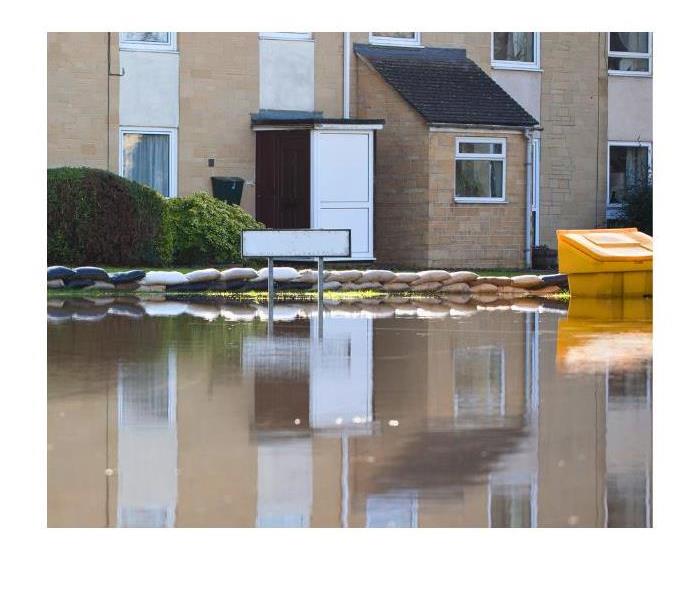 Mitigate Flooding Risks in Colorado Springs, Colorado.
Mitigate Flooding Risks in Colorado Springs, Colorado.
Nestled in the scenic landscapes of Colorado, Colorado Springs offers residents a blend of natural beauty and outdoor adventures. However, along with its picturesque surroundings comes the risk of flooding, particularly during heavy rainstorms or rapid snowmelt. Protecting your home from flooding is paramount to safeguarding your family and property. Here are seven essential tips to help reduce flooding risks in your Colorado Springs home.
1. Understand Your Property's Flood Risk:
Before implementing any flood mitigation measures, it's crucial to understand your property's flood risk. FEMA's Flood Insurance Rate Map (FIRM) provides valuable information about flood zones in your area. Additionally, consulting with local authorities or hiring a professional can help assess your property's susceptibility to flooding. Armed with this knowledge, you can tailor your flood preparedness efforts accordingly.
2. Elevate Vulnerable Utilities:
Electrical systems, HVAC units, and other utilities are vulnerable to water damage during flooding. Elevating these critical components above flood levels can minimize the risk of costly repairs and potential safety hazards. Consider installing electrical outlets and circuit breakers at higher elevations and relocating HVAC units to elevated platforms. Elevating utilities not only protects your home but also ensures essential services remain operational during and after a flood event.
3. Invest in Flood Barriers and Sealants:
Sealing your home against water intrusion is an effective way to mitigate flooding risks. Installing flood barriers such as flood gates, sandbags, or inflatable barriers can prevent water from entering vulnerable entry points like doors, windows, and vents. Additionally, applying waterproof sealants to basements, walls, and foundations can reinforce your home's defenses against water seepage. Regularly inspect and maintain these barriers and sealants to ensure they remain effective over time.
4. Implement Landscape Grading and Drainage Solutions:
Proper landscape grading and drainage are essential for directing water away from your home's foundation. Sloping the ground away from your property and installing French drains, swales, or rain gardens can help channel water away from vulnerable areas. Clearing debris from gutters, downspouts, and storm drains is also critical to prevent water buildup and potential blockages. By addressing drainage issues on your property, you can reduce the likelihood of water pooling around your home during heavy rainfall.
5. Install Sump Pumps and Backup Systems:
Sump pumps are invaluable tools for removing excess water from basements and crawl spaces. Installing a reliable sump pump with a battery backup system can provide an added layer of protection against flooding. In the event of a power outage, the backup system ensures continuous operation, preventing water damage even during emergencies. Regular maintenance, including testing the pump and replacing batteries as needed, is essential to ensure optimal performance when you need it most.
6. Elevate or Waterproof Basement Structures:
Basements are particularly susceptible to flooding due to their below-ground location. Elevating basement floors above the flood level or installing waterproofing measures such as sump pumps, interior drainage systems, and sealants can help protect valuable belongings and structural integrity. Consider retrofitting basement windows with flood vents to equalize water pressure and prevent hydrostatic pressure buildup during floods. Investing in basement waterproofing not only safeguards your home but also enhances its resale value and livability.
7. Obtain Flood Insurance Coverage:
Despite your best efforts to mitigate flood risks, unforeseen circumstances can still lead to water damage. Securing adequate flood insurance coverage provides financial protection against losses resulting from flooding events. While standard homeowners' insurance policies typically exclude flood damage, obtaining a separate flood insurance policy through the National Flood Insurance Program (NFIP) or private insurers can offer peace of mind and financial security. Review your insurance coverage annually to ensure it adequately reflects your property's flood risk and coverage needs.
In Colorado Springs, where the beauty of nature coexists with the threat of flooding, taking proactive measures to protect your home is essential. By understanding your property's flood risk, elevating utilities, investing in flood barriers and sealants, implementing landscape grading and drainage solutions, installing sump pumps and backup systems, waterproofing basement structures, and obtaining flood insurance coverage, you can significantly reduce the impact of flooding on your home and family. Remember, preparedness is key to weathering the storm and safeguarding what matters most.
A Fresh Start: Tips for Spring Cleaning in Colorado Springs, CO
4/5/2024 (Permalink)
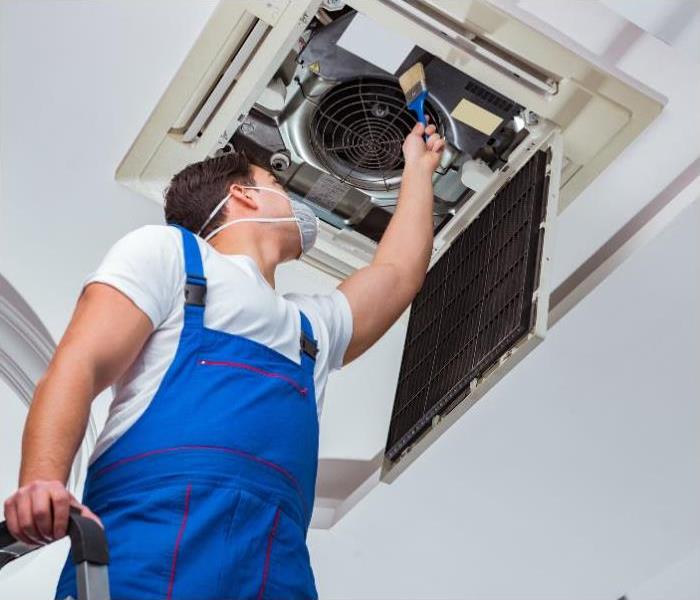 Focus on Indoor Air Quality in North Central Colorado Spring
Focus on Indoor Air Quality in North Central Colorado Spring
As the chill of winter melts away and the vibrant colors of spring begin to bloom, it's time to embrace the tradition of spring cleaning in Colorado Springs, CO. With its stunning mountain backdrop and outdoor-oriented lifestyle, Colorado Springs offers a unique setting for refreshing your living space and rejuvenating your mindset. Whether you're a long-time resident or new to the area, these tips will help you tackle your spring cleaning with ease and efficiency.
Plan Ahead:
Before diving into the cleaning frenzy, take some time to plan your approach. Make a checklist of tasks you want to accomplish, prioritize them, and set realistic goals for each day or weekend. Breaking down the process into manageable steps will help prevent overwhelm and ensure nothing gets overlooked.Declutter Mindfully:
Spring cleaning is the perfect opportunity to declutter your home and clear out any unnecessary items that have accumulated over the year. Take a systematic approach to decluttering each room, sorting items into categories such as keep, donate, or discard. In Colorado Springs, consider donating gently used outdoor gear or winter clothing to local shelters or thrift stores.
Embrace Eco-Friendly Cleaning Products:
Protecting the environment is a top priority for many Colorado residents, so why not extend that ethos to your spring cleaning routine? Opt for eco-friendly cleaning products that are safe for both your family and the planet. Alternatively, you can make your own natural cleaners using ingredients like vinegar, baking soda, and essential oils.Focus on Indoor Air Quality:
With Colorado's dry climate and high altitude, maintaining indoor air quality is essential for your health and comfort. Invest in a high-quality air purifier to remove allergens, dust, and pollutants from the air. Don't forget to clean or replace HVAC filters, vacuum carpets and upholstery regularly, and open windows to let in fresh mountain air whenever possible.Pay Attention to Outdoor Spaces:
Spring cleaning isn't just limited to the indoors – outdoor spaces need some TLC too, especially after a long winter. Sweep away debris from pathways and driveways, prune overgrown bushes and trees, and clean outdoor furniture and grill equipment in preparation for al fresco dining and outdoor entertaining.Tackle Seasonal Maintenance Tasks:
Spring is the perfect time to tackle those maintenance tasks that often get overlooked during the rest of the year. Inspect your home's exterior for any damage or wear and tear, such as loose shingles, cracked caulking, or peeling paint. Schedule a professional roof inspection if needed, and clean out gutters to prevent water damage during spring showers.Organize Outdoor Gear:
Living in Colorado Springs means easy access to a wealth of outdoor recreational opportunities, from hiking and biking to skiing and snowboarding. Take stock of your outdoor gear and equipment, organizing it in a way that makes it easy to access and maintain. Consider investing in storage solutions such as racks, bins, or shelving units to keep everything neat and tidy.Involve the Whole Family:
Spring cleaning doesn't have to be a solo endeavor – get the whole family involved for a fun and productive bonding experience. Assign age-appropriate tasks to each family member, set a timer for short bursts of cleaning, and reward yourselves with a family outing or picnic once the work is done.
Support Local Businesses:
When shopping for cleaning supplies or home organization products, consider supporting local businesses in Colorado Springs. From family-owned hardware stores to eco-conscious cleaning companies, there are plenty of options to choose from that align with the values of the community.
Celebrate Your Accomplishments:
Once your spring cleaning is complete, take a moment to celebrate your accomplishments and enjoy your refreshed living space. Light some candles, open the windows to let in the fresh air, and treat yourself to a well-deserved break surrounded by the beauty of Colorado Springs.
Spring cleaning in Colorado Springs is more than just a chore – it's an opportunity to refresh your home, declutter your life, and embrace the spirit of renewal that comes with the changing seasons. By following these tips and embracing the unique qualities of the Colorado lifestyle, you can make your spring cleaning experience both efficient and enjoyable. So roll up your sleeves, put on some music, and get ready to welcome spring with a clean and organized home.
How to Identify a Mold Problem in Your Colorado Springs Home
3/7/2024 (Permalink)
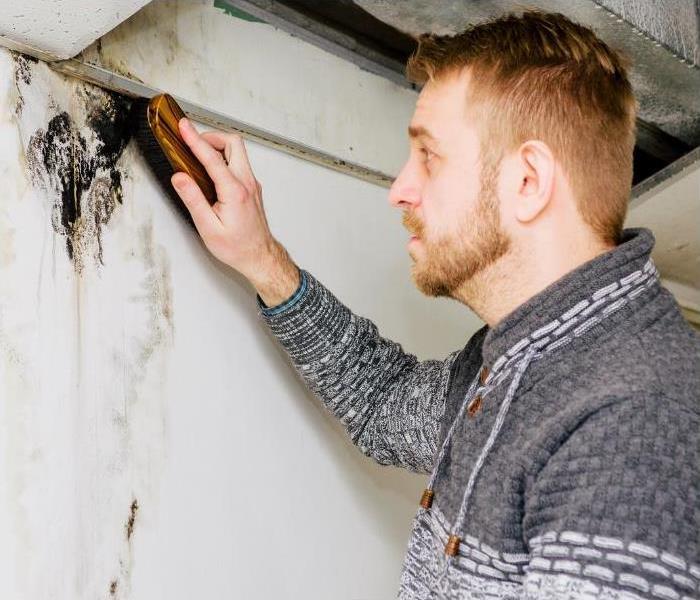 Mold problem in North Central Colorado Spring, UT.
Mold problem in North Central Colorado Spring, UT.
Nestled at the foot of the majestic Rocky Mountains, Colorado Springs is renowned for its stunning landscapes and outdoor adventures. However, beneath the scenic beauty lies a potential threat that can quietly invade your home – mold. Mold growth is a common issue in many households, and Colorado Springs is no exception. The semi-arid climate, occasional heavy rains, and fluctuating temperatures create an environment conducive to mold development. In this blog, we'll explore the signs of a mold problem in your Colorado Springs home and discuss the importance of timely identification and remediation.
Understanding the Colorado Springs Climate
Colorado Springs experiences a unique climate that can contribute to mold growth. With low humidity levels and significant temperature variations, especially between day and night, the conditions are ripe for mold to flourish. The occasional heavy rains during the summer months can also elevate moisture levels, creating an ideal breeding ground for mold spores.
Identifying Common Mold Species
Mold comes in various shapes and forms, with some species posing potential health risks. In Colorado Springs, you may encounter molds like Stachybotrys chartarum (black mold), Aspergillus, Cladosporium, and Penicillium. Each mold species has distinct characteristics, colors, and potential health effects. Recognizing these differences can be crucial in identifying a mold problem in your home.
Visible Signs of Mold
One of the most apparent indicators of a mold issue is visible mold growth. Mold can appear as fuzzy patches, discoloration, or even black spots on walls, ceilings, and other surfaces. Pay close attention to damp or humid areas such as bathrooms, basements, and kitchens, as these are common hotspots for mold growth. If you notice any unusual spots or discoloration, it's essential to investigate further to determine if mold is the culprit.
Musty Odors
Mold often produces a distinct musty odor that can permeate your living spaces. If you catch a whiff of an unpleasant, earthy smell, it could be a sign of hidden mold growth. Pay attention to areas with poor ventilation or high humidity levels, as these are prime locations for mold to thrive. Investigate the source of the odor to identify and address any potential mold problems.
Allergic Reactions
Mold spores can trigger allergic reactions in sensitive individuals. If you or your family members experience unexplained allergic symptoms such as sneezing, coughing, itchy eyes, or respiratory issues, it might be indicative of a mold problem in your home. Consider consulting with a healthcare professional to rule out other causes and take steps to investigate and address any potential mold sources.
Water Leaks and Moisture Issues
Colorado Springs residents are no strangers to occasional heavy rains and snow. These weather events can lead to water leaks, which, if left unattended, create favorable conditions for mold growth. Inspect your home for signs of water damage, such as stained ceilings, peeling paint, or warped walls. Addressing water leaks promptly is crucial in preventing mold proliferation.
Humidity Levels
Low humidity levels are a defining characteristic of Colorado Springs' climate. However, there are instances, especially during the summer months, when humidity levels can rise. Keep an eye on indoor humidity using a hygrometer, aiming to maintain levels between 30-50%. Excessive humidity can create a hospitable environment for mold, making it essential to implement proper ventilation and moisture control measures.
Condensation on Windows
Condensation on windows is a common occurrence in homes, especially during the colder months. However, persistent condensation can indicate elevated humidity levels and poor ventilation, potentially leading to mold issues. Regularly inspect and wipe down windows to prevent moisture buildup and consider implementing measures such as improved ventilation and dehumidification to mitigate mold risks.
Hidden Mold in HVAC Systems
The HVAC (Heating, Ventilation, and Air Conditioning) system in your home plays a crucial role in regulating indoor air quality. Unfortunately, HVAC systems can also harbor hidden mold if not properly maintained. Inspect your HVAC system for signs of mold growth, such as foul odors or visible mold in ducts and vents. Regular professional maintenance can help prevent and address mold issues in your home's ventilation system.
DIY Mold Testing Kits
If you suspect a mold problem but can't identify the source, DIY mold testing kits are available. These kits typically include sampling materials and instructions for collecting mold samples from your home. Keep in mind that while these kits can provide initial insights, they may not be as accurate as professional mold testing conducted by certified inspectors. If the DIY test indicates the presence of mold, it's advisable to consult with professionals for a comprehensive assessment.
Professional Mold Inspection
For a thorough and accurate assessment of mold in your Colorado Springs home, consider hiring a certified mold inspector. These professionals have the expertise and equipment to identify hidden mold, assess the extent of the problem, and provide recommendations for remediation. A professional inspection is particularly crucial if you suspect extensive mold growth or if there are underlying structural issues contributing to the problem.
Identifying a mold problem in your Colorado Springs home requires vigilance, especially in a climate prone to temperature fluctuations and occasional heavy rains. By staying alert to visible signs, monitoring indoor humidity, addressing water leaks promptly, and conducting periodic inspections, you can safeguard your home and family from the potential health risks associated with mold. If you suspect a mold issue, don't hesitate to seek professional assistance for a comprehensive assessment and effective remediation. With proactive measures, you can enjoy the breathtaking beauty of Colorado Springs without the silent threat of mold lurking within your home.
Navigating Water Damage in Colorado Springs with SERVPRO's Expertise
1/12/2024 (Permalink)
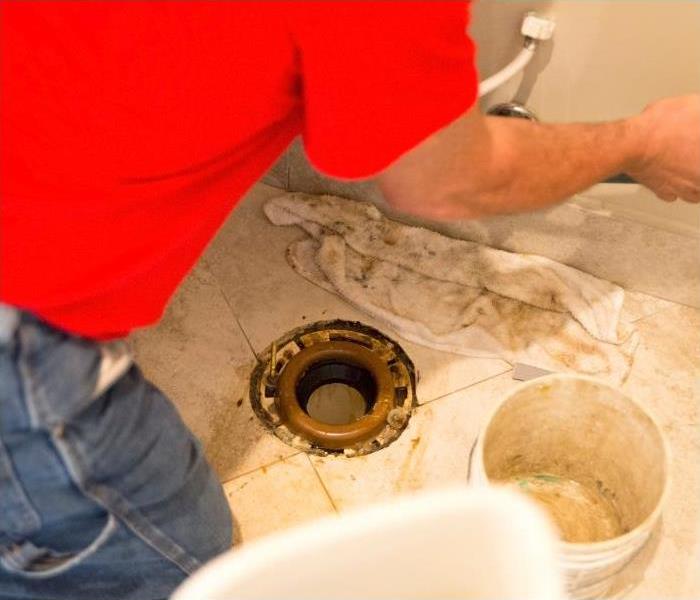 Leaking toilet in Colorado Springs, CO.
Leaking toilet in Colorado Springs, CO.
Colorado Springs, CO, with its stunning landscapes and thriving community, is a place where homeowners take pride in their properties. However, the serenity of this picturesque city can be disrupted by unexpected events, such as water damage caused by a leaking toilet. In this comprehensive blog, we'll delve into the nuances of water damage, its potential consequences, and how we, a renowned restoration company, can be your beacon of hope in restoring your home to its former glory.
Understanding the Impact of Water Damage
Leaking Toilets: The Unseen Menace
Leaking toilets often go unnoticed until the damage is already underway. Whether it's a slow leak or a sudden burst, the consequences can be severe. In a city like Colorado Springs, where homes are nestled against the backdrop of nature, the effects of water damage can be compounded.
Immediate Consequences
The moment water infiltrates your home, it starts to seep into various materials. From drywall to flooring and even the foundation, the immediate impact is far-reaching.
Structural Integrity Under Threat
Over time, prolonged exposure to water can compromise the structural integrity of your home. What might start as a small leak can escalate into a major issue, necessitating costly repairs.
Mold's Silent Invasion
Colorado's unique climate, characterized by dry air and high altitude, doesn't exempt homes from the risk of mold growth. Water damage creates the ideal conditions for mold and mildew, posing not just structural but also health risks to residents.
Our Advantage:
Rapid Response in the Rockies
We understand the urgency of water damage. Their 24/7 emergency services ensure that a team of experts is at your doorstep promptly, ready to mitigate the damage and prevent further escalation.
State-of-the-Art Equipment
Equipped with cutting-edge technology, we employ advanced drying equipment, moisture meters, and thermal imaging to assess and address water damage with precision. This ensures that no corner of your home is overlooked during the restoration process.
Comprehensive Restoration Expertise
The skilled technicians bring a wealth of experience to the table. From water extraction to thorough drying and sanitization, they handle every aspect of the restoration process meticulously.
Navigating the Insurance Maze
Dealing with insurance claims can be a daunting task, especially when you're already dealing with the aftermath of water damage. SERVPRO's professionals work closely with insurance companies, streamlining the claims process and alleviating the burden on homeowners.
The Restoration Journey:
Emergency Response
When you discover a leaking toilet or any other water damage in your Colorado Springs home, time is of the essence. SERVPRO's rapid response ensures that the damage is assessed promptly, and the necessary measures are put in place to prevent further harm.
Water Extraction and Drying
Utilizing state-of-the-art equipment, SERVPRO's technicians commence with water extraction to remove excess moisture. This is followed by an intensive drying process, using dehumidifiers and air movers to ensure that all affected areas are thoroughly dried.
Sanitization and Deodorization
Water damage often brings unpleasant odors and the risk of microbial growth. We don't just stop at drying; they go the extra mile to sanitize affected areas, ensuring a clean and safe environment for you and your family.
Restoration, Not Just Repairs
We believe in restoring, not just repairing. Their team works diligently to bring your home back to its pre-damage condition, addressing not only visible damage but also potential hidden issues.
Ongoing Monitoring
Even after the visible signs of water damage are addressed, we don't walk away. They continue to monitor moisture levels to ensure that your home remains dry and free from the risk of future issues.
Restoring Peace of Mind in Colorado Springs
Choosing us for water damage restoration in Colorado Springs is not just about fixing your home; it's about restoring your peace of mind. In a city known for its tranquility and natural beauty, homeowners can rest assured that their property is in capable hands.
Water damage from a leaking toilet may disrupt the harmony of your Colorado Springs home, but with SERVPRO's expertise, it can be transformed from a source of stress to a story of restoration. Don't let water damage linger – take the first step toward reclaiming your home and ensuring a future free from the lingering effects of leaks. Choose us for a comprehensive and effective restoration journey that brings your property back to its luxurious best.
6 Steps to Prevent Frozen Pipes in North Central Colorado Springs, CO.
12/26/2023 (Permalink)
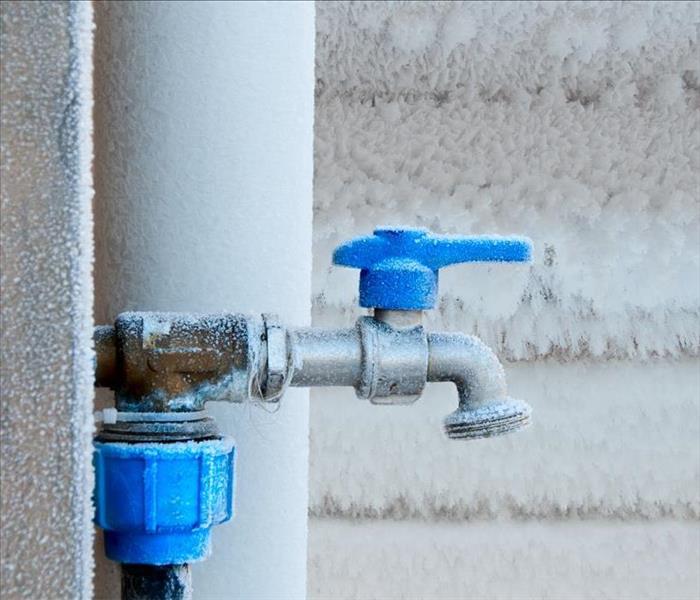 A frozen faucet in Colorado Springs, CO.
A frozen faucet in Colorado Springs, CO.
Winter in Colorado Springs, CO brings with it a magical snowy landscape, cozy fires, and the holiday spirit. However, it also ushers in freezing temperatures that can wreak havoc on your home's plumbing. One of the most common and potentially costly issues during this season is frozen pipes. When temperatures plummet, the water inside pipes can freeze, leading to cracks, bursts, and extensive damage. To help you fortify your home against the winter chill, we've compiled a comprehensive guide with six effective strategies to prevent your pipes from freezing in Colorado Springs.
6 Strategies to Prevent Frozen Pipes
1. Insulate:
Proper insulation is the first line of defense against frozen pipes. In a region where winter temperatures can be particularly harsh, it's crucial to ensure that all exposed pipes are well-insulated. Start by identifying pipes in vulnerable areas such as attics, basements, and crawl spaces. Foam pipe insulation is a cost-effective and efficient solution, wrapping around pipes to provide a protective barrier against the cold. Additionally, consider using heating tape for an extra layer of warmth, especially in areas prone to extreme cold.
Don't forget about areas where cold air might find its way into your home. Check for gaps or cracks in your home's foundation and walls and seal them promptly. By fortifying your home's envelope, you not only protect your pipes but also enhance your overall energy efficiency.
2. Keep Your Home Warm:
Maintaining a consistent indoor temperature is key to preventing frozen pipes. While it might be tempting to lower your thermostat to save on heating costs, the risk of frozen pipes increases with a significant temperature drop. Aim to keep your home at a minimum of 55 degrees Fahrenheit, even when you're away. This not only protects your pipes but also ensures a comfortable living environment.
Investing in a smart thermostat can be a wise decision. These devices allow you to program your heating system efficiently, ensuring that your home stays warm when needed and conserving energy when you're not around. Some smart thermostats even provide alerts if the temperature inside your home drops to a level that could put your pipes at risk.
3. Let the Faucets Drip:
Running water, even at a trickle, can be a simple yet effective strategy to prevent pipes from freezing. When water flows through the pipes, it relieves pressure and reduces the risk of freezing. Focus on faucets connected to pipes that run through unheated or poorly insulated areas, such as those in exterior walls.
It's important to note that the goal is not to waste water but to create a steady flow that discourages freezing. During particularly cold nights, letting faucets drip in different parts of your home can provide added protection. This proactive measure is especially useful for homes with a history of frozen pipes or those in areas prone to severe winter weather.
4. Open Cabinet Doors:
Kitchen and bathroom cabinets often house pipes, and these spaces can become quite chilly, especially if they are located against exterior walls. To encourage the flow of warm air around the pipes, keep cabinet doors open during extremely cold weather. This allows the heat from your home's interior to reach the pipes and helps maintain a temperature that discourages freezing.
For added insulation, consider placing a towel or foam board at the back of the cabinet to create a barrier between the pipes and the cold air. By taking this simple step, you enhance the effectiveness of your heating system and reduce the risk of frozen pipes in these vulnerable areas.
5. Seal Leaks and Cracks:
A thorough inspection of your home for potential points of entry for cold air is essential in preventing frozen pipes. Cracks in windows, doors, and foundation walls can allow frigid air to seep in, putting your pipes at risk. Take the time to inspect these areas and seal any gaps using weatherstripping, caulk, or insulation.
Start by examining the exterior of your home, paying attention to window frames, door seals, and any visible cracks in the walls. Move inside and check for drafts near windows and doors. Attics and basements are also common culprits for air leaks. By addressing these issues, you not only protect your pipes but also enhance the overall energy efficiency of your home.
6. Disconnect and Drain Outdoor Hoses:
Outdoor hoses and faucets are particularly vulnerable to freezing temperatures. Before winter arrives in full force, take the time to disconnect and drain all outdoor hoses. Shut off the water supply to exterior faucets and drain any remaining water from the pipes. This prevents water from lingering in the pipes outside and minimizes the risk of freezing and subsequent damage.
Consider installing frost-free hose bibs if your home doesn't already have them. These bibs are designed to prevent water from remaining in the exposed portion of the pipe, reducing the likelihood of freezing. Taking proactive steps to winterize your outdoor plumbing can save you from the headache of dealing with burst pipes when spring arrives.
In conclusion, safeguarding your pipes from freezing in Colorado Springs requires a combination of proactive measures and thoughtful home maintenance. By insulating, regulating indoor temperatures, letting faucets drip, opening cabinet doors, sealing leaks, and disconnecting outdoor hoses, you can significantly reduce the risk of frozen pipes and the headaches that come with them. This winter, take the necessary steps to fortify your home, ensuring a warm and worry-free season for you and your pipes. Remember, a little preparation goes a long way in protecting your home from the winter chill. Stay warm, stay safe!
Winterizing Your Home in Colorado Springs: A Comprehensive Guide to Ensure a Cozy and Damage-Free Season
11/9/2023 (Permalink)
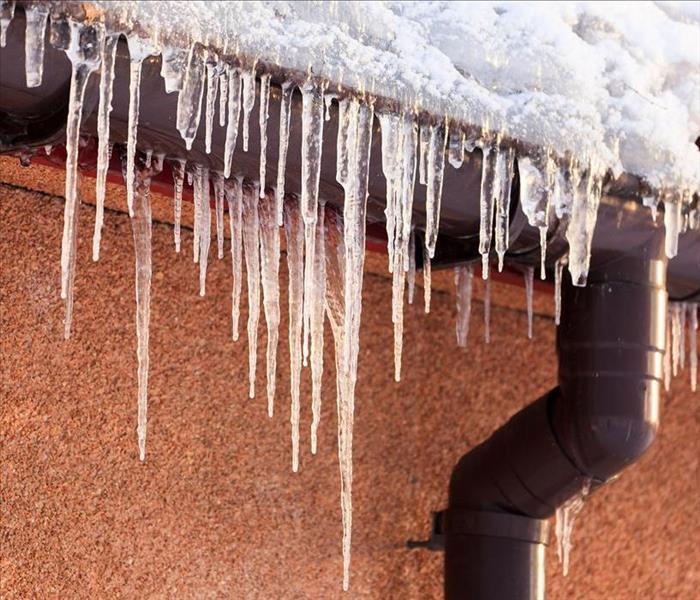 Clogged gutters can lead to ice dams in Colorado Springs, CO.
Clogged gutters can lead to ice dams in Colorado Springs, CO.
As the autumn leaves fall and a chill creeps into the air, residents of Colorado Springs know that winter is just around the corner. While the snow-covered landscapes are undeniably beautiful, the winter season can pose challenges for homeowners. From freezing temperatures to heavy snowfall, it's essential to prepare your home to withstand the elements and avoid costly damage. In this comprehensive guide, we'll delve into a variety of measures you can take to winterize your home in Colorado Springs, CO effectively.
- Sealing the Leaks: Inspect and Seal Windows and Doors
The first line of defense against the winter cold is ensuring that your home is properly sealed. Check for any gaps or cracks in windows and doors, as these can allow cold drafts to enter, making your heating system work harder and increasing energy costs. Utilize weatherstripping and caulk to seal these gaps, creating a more energy-efficient and comfortable living environment.
- Heating System Maintenance: Ensuring Warmth When You Need It
The heart of your winter readiness plan lies in the efficiency of your heating system. Don't wait until the mercury drops to have it inspected. Schedule a professional service to check for any issues, replace filters, and ensure that your heating system is operating at peak performance. Consider upgrading to a programmable thermostat for better control and energy savings.
- Guarding Against Frozen Pipes: Insulation and Prevention
Frozen pipes can wreak havoc on your home, leading to expensive repairs. Insulate exposed pipes in unheated areas, and consider using heat tape for added protection. Disconnect and drain outdoor hoses, and shut off the water supply to outdoor faucets. Taking these precautions will help prevent freezing and ensure a steady flow of water throughout the winter.
- Clearing the Way: Gutter Maintenance for Ice Dam Prevention
Clogged gutters can lead to ice dams, which can cause damage to your roof and interior spaces. Clean gutters and downspouts of leaves and debris to allow for proper drainage. Ensure that downspouts direct water away from your home's foundation to prevent ice buildup. Consider installing gutter guards to minimize the accumulation of debris.
- Up on the Rooftop: Roof Inspection and Maintenance
Your roof bears the brunt of winter weather, and it's crucial to inspect it for any vulnerabilities. Check for loose or damaged shingles and address them promptly. Look for signs of leaks and ensure that your attic is adequately insulated to prevent ice dams. If you're uncertain about your roof's condition, consult with a professional roofing contractor.
- Winter Essentials: Stocking Up for Storms
Prepare for winter storms by stocking up on essential supplies. Rock salt, snow shovels, and emergency kits should be readily available. Create an emergency kit with flashlights, batteries, blankets, and non-perishable food items in case of power outages. Being prepared ensures that you can weather the storm comfortably and safely.
- Landscaping for Winter: Trim, Clear, and Protect
The winter landscape may be harsh, and your landscaping should be adapted accordingly. Trim tree branches that could pose a threat under the weight of snow or ice. Clear dead vegetation from around your property to reduce fire hazards and make snow removal more manageable. Consider using burlap or other protective coverings for delicate plants.
- Insurance Check: Reviewing Your Coverage
Before winter arrives in full force, take the time to review your homeowner's insurance policy. Ensure that it provides adequate coverage for winter-related damage, including snow and ice damage. Understand the specifics of your policy, and make any necessary adjustments to guarantee comprehensive protection for your home.
As winter approaches, taking these proactive measures can make all the difference in safeguarding your home against the challenges of the season. From insulating windows to maintaining your heating system and preparing for winter storms, a comprehensive approach ensures that your home remains warm, comfortable, and free from winter-related damage. By investing the time and effort now, you'll enjoy a worry-free winter in the picturesque surroundings of Colorado Springs. Stay cozy, stay prepared!
The Comprehensive Guide to Fire Damage Restoration in Colorado Springs, CO
10/19/2023 (Permalink)
 Fire damaged home in Colorado Springs, CO.
Fire damaged home in Colorado Springs, CO.
Facing a fire in your home is a devastating and overwhelming experience. Beyond the immediate danger of the flames, the aftermath often leaves homeowners grappling with the emotional and logistical challenges of recovery. Fire damage can range from charred walls and smoke-stained ceilings to water damage from firefighting efforts. The process of restoring your home can seem daunting, but there is hope. In this comprehensive guide, we will take an in-depth look at the 4-step fire restoration process that SERVPRO of North Central Colorado Springs follows to help homeowners rebuild and reclaim their lives after suffering fire damage.
The 4-Step Fire Restoration Process
Step 1: Assessment and Inspection
The first step in the fire restoration process is the assessment and inspection of the damaged property. This initial phase is critical as it sets the foundation for the entire restoration plan. SERVPRO of North Central Colorado Springs deploys experienced professionals who meticulously examine every aspect of your home affected by the fire.
Damage Evaluation: The assessment begins with a detailed evaluation of the extent of damage. This includes the visible signs of fire and smoke damage but also extends to less apparent issues like structural damage, compromised electrical and plumbing systems, and potential health hazards.
Salvageable Items: During the assessment, the team identifies items and materials that can be salvaged. This can include valuable personal belongings, furniture, and sentimental items. A comprehensive inventory is created to guide the restoration process.
Restoration Plan: The assessment phase results in a detailed restoration plan tailored to the specific needs of your property. Each plan is unique, addressing the individual characteristics of your home and the extent of the damage.
Insurance Coordination: We work closely with your insurance company to ensure that you receive fair coverage. This collaborative approach is designed to streamline the claims process, and it aims to guarantee that no damage is overlooked.
Step 2: Mitigation and Securement
Once the assessment is complete, the next critical step is mitigating further damage and securing the property. This is essential to prevent additional harm and ensure the safety of your home.
Securing the Property: After a fire, your home may be exposed to the elements, vandalism, or theft. SERVPRO of North Central Colorado Springs takes immediate action to secure your property. This includes boarding up windows, doors, and any other openings that may pose a security risk.
Addressing Water Damage: In many cases, water is used to extinguish the fire, resulting in water damage. This step is crucial for your safety and the preservation of your property. SERVPRO's team uses specialized equipment to remove excess water and moisture, preventing further damage and the growth of mold.
Step 3: Cleanup and Restoration
With the property secure and free from additional damage, the focus shifts to the cleanup and restoration phase. This is where our team of experts works to return your home to its pre-fire condition.
Removal of Soot, Smoke, and Residue: The cleanup phase involves the meticulous removal of soot, smoke, and fire residue from all surfaces. This process employs advanced techniques and cleaning products to ensure that your home is not only clean but also free from harmful substances.
Odor Control: The team also addresses odors associated with fire damage. This involves the use of advanced deodorization techniques to ensure that your home smells fresh and clean once more.
Structural Repairs: If structural damage has occurred, we will work to repair and restore your home. This includes rebuilding walls, replacing damaged insulation, and addressing compromised electrical and plumbing systems. The goal is to make your home safe, functional, and aesthetically pleasing again.
Step 4: Final Inspection and Rebuilding
The final step in the fire restoration process involves a thorough inspection to ensure that all work has been completed to exacting standards. This step is critical as it provides homeowners with the assurance that their home is safe, clean, and free from any residual damage.
Quality Assurance: We take pride in our commitment to quality and customer satisfaction. During the final inspection, every aspect of the restoration process is evaluated to ensure that it meets our high standards.
Rebuilding: Once the final inspection is complete and the homeowner is satisfied, the process of rebuilding and restoring the home begins. We work with experienced contractors to ensure that your home is not only structurally sound but also visually appealing and functional. Homeowners are actively involved in the decision-making process throughout the restoration phase.
Recovering from a fire in your Colorado Springs, CO home is an arduous journey, but with the right partner by your side, you can reclaim your life and restore your property. SERVPRO of North Central Colorado Springs is dedicated to guiding you through the 4-step fire restoration process, from the initial assessment to the final rebuilding, with a commitment to making the process as smooth and stress-free as possible. Your home's future begins with the expertise, care, attention to detail, and dedication that we bring to each and every restoration project. In the face of adversity, there is hope, and your home's restoration is a testament to the power of resilience and expert care.




 24/7 Emergency Service
24/7 Emergency Service









